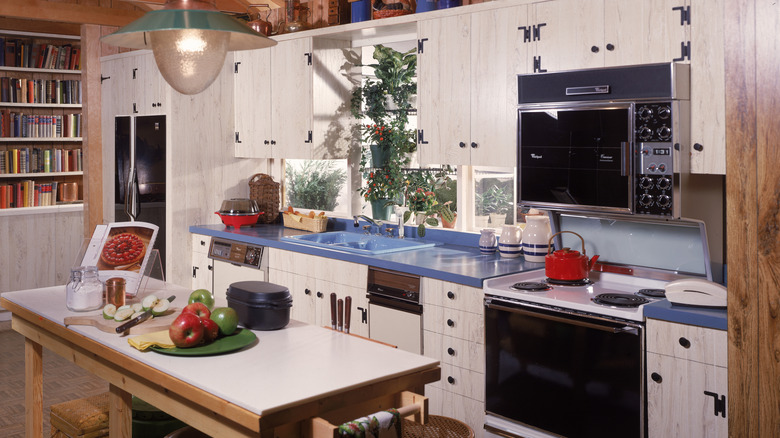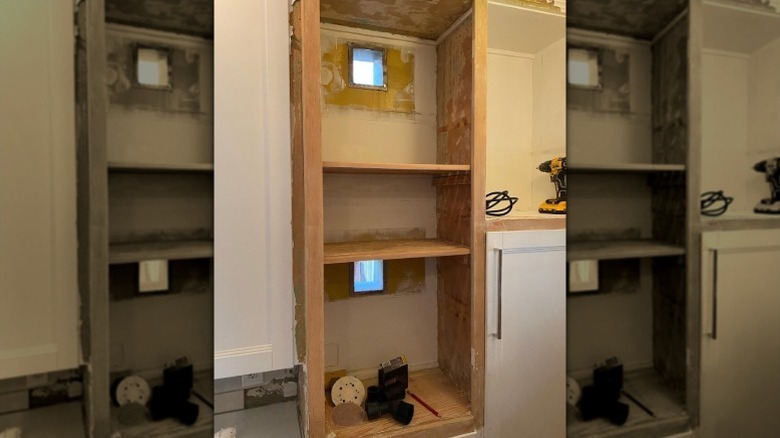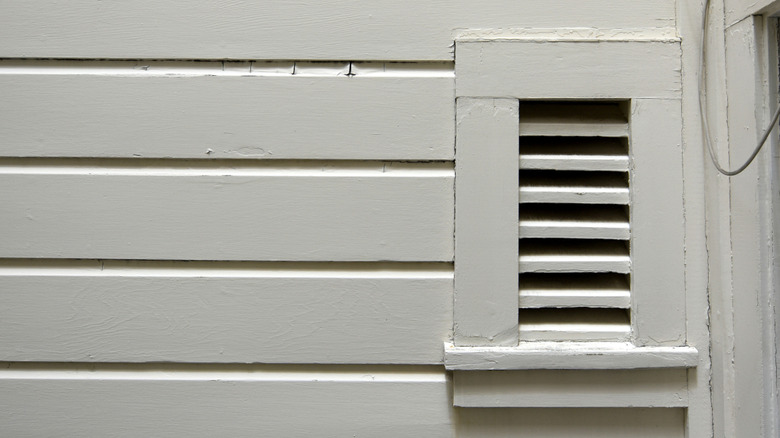The Vintage Cooling Feature That Deserves A Big Comeback In Kitchens
Vintage kitchens have a lot of fabulous features — think geometric tiles and colorful appliances with vibrant designs. While some dated kitchen design trends are not likely to come back into fashion anytime soon, it's no surprise that some of them are gaining popularity again. One of these vintage kitchen features actually making a comeback looks a little odd at first, even noticeable from the outside of the house, with stacked mesh vents that connect to the inside of a tall, narrow kitchen cabinet. It's the California cooler, commonly found in West Coast bungalows in the late 19th and early 20th centuries.
The California cooler was a storage cabinet for fruits, vegetables, and other food items that was popular before refrigerators were commonly found in residential kitchens. It allowed homeowners to store produce that could benefit from cool temperatures but didn't require an icebox, keeping high volumes of potatoes, cheese, and baked goods fresh throughout the year. While most homes count on the luxury of refrigeration these days, a California cooler can still be a useful feature even in a modern kitchen, essentially functioning as a zero-energy produce cooler that could even permit off-the-grid living.
California coolers can still be quite useful today
Nowadays, most homeowners have removed these California coolers from their kitchens or transformed them into standard storage space, particularly if they have undertaken an upgrade of dated kitchen cabinets. Some homeowners and contractors even remove them without knowing what they are, assuming these unusual cabinets have no place in a modern kitchen. Those who have kept them — whether intentionally or for simple lack of a full kitchen renovation — often use them for wine and beverage storage. While not everyone may realize their intended use, those who do will occasionally opt to restore them, wishing to benefit from their natural cooling abilities and the potential energy savings that follow.
In a modern kitchen, a California cooler can still come in handy to store the same food items that were kept in this cabinet a century ago. This particularly applies in a large household, where the space inside the fridge never quite seems to be enough for the whole family. Some homeowners even choose to switch out their large refrigerator for a smaller one after successfully resurrecting their California cooler to keep root vegetables and other food items fresh outside the fridge.
How California coolers actually work
The vertically stacked vents spotted along the outside of these old West Coast bungalows are the key to how California coolers work. Cool air enters the cabinet through the lower vent, where it rises as it warms, and exits through the higher vent, circulating the cooler air in and the hot air up and out of the cabinet. The storage shelves inside the cabinet are either perforated, slatted, or made of sturdy wire, further streamlining the upward air circulation. In slightly warmer climates, the same effect can be achieved by connecting the lower vent to a basement, where temperatures remain cool even when it gets warmer outside.
The fine mesh that separates the inside of the cabinet from the outdoors is also crucial to the functionality of a California cooler. This mesh historically kept out insects and other animals and would have the same important use today. If you're feeling inspired and choose to restore your California cooler, make sure to work a good mesh cover into the project, as leaving it out could be a grave food storage mistake, resulting in a pest problem.


